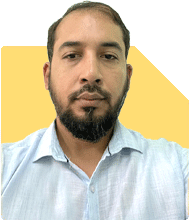My son scored 93.2 percentile in JEE Mains: Kiit CSE or NITTE Manglore Mechanical?
Aasif Ahmed Khan | Answer |Ask -Follow
Tech Career Expert - Answered on Jul 02, 2024
Aasif is passionate about guiding students and aspiring engineers as they aim to choose the right educational paths, including courses and colleges.
He holds a bachelor's degree in mechanical engineering from the Indore Institute of Science & Technology in Indore and is currently pursuing a master's degree in thermal and fluid engineering at the Indian Institute of Technology, Mumbai.... more

Sir my son got 93.2 percentile in jee mains nd 87 percentage in 12th Now he elegible for cse in kiit odisha and mechanical in nitte manglore. Which college is best for him
NMAMIT : The Department of Mechanical Engineering at NMAMIT has been established since 1986 and offers a strong mechanical engineering program. The annual graduating strength of undergraduate students in mechanical engineering is approximately 180. NMAMIT is accredited by the NBA and recognized as an established research center under Nitte Deemed-to-be University.
If your son is interested in traditional engineering, machines, and materials, NMAMIT could be a great choice.
KIIT : School of Computer Engineering offers undergraduate programs in Computer Science & Engineering (CSE), Information Technology, and related fields.
KIIT is a well-known deemed-to-be university with a good reputation. The B.Tech in Computer Science and Engineering program at KIIT provides a comprehensive curriculum and opportunities for growth. KIIT’s B.Tech CSE program ranks well in national rankings, such as NIRF and IIRF. Consider KIIT if your son is passionate about computer science, programming, and technology.
Dr Dipankar Dutta |1841 Answers |Ask -Follow
Tech Careers and Skill Development Expert - Answered on Dec 14, 2025
Nayagam P P |10854 Answers |Ask -Follow
Career Counsellor - Answered on Dec 14, 2025
Radheshyam Zanwar |6744 Answers |Ask -Follow
MHT-CET, IIT-JEE, NEET-UG Expert - Answered on Dec 14, 2025
Radheshyam Zanwar |6744 Answers |Ask -Follow
MHT-CET, IIT-JEE, NEET-UG Expert - Answered on Dec 14, 2025
Dr Dipankar Dutta |1841 Answers |Ask -Follow
Tech Careers and Skill Development Expert - Answered on Dec 14, 2025
Dr Dipankar Dutta |1841 Answers |Ask -Follow
Tech Careers and Skill Development Expert - Answered on Dec 13, 2025
Dr Dipankar Dutta |1841 Answers |Ask -Follow
Tech Careers and Skill Development Expert - Answered on Dec 13, 2025
Mayank Chandel |2575 Answers |Ask -Follow
IIT-JEE, NEET-UG, SAT, CLAT, CA, CS Exam Expert - Answered on Dec 13, 2025
Radheshyam Zanwar |6744 Answers |Ask -Follow
MHT-CET, IIT-JEE, NEET-UG Expert - Answered on Dec 13, 2025
Mayank Chandel |2575 Answers |Ask -Follow
IIT-JEE, NEET-UG, SAT, CLAT, CA, CS Exam Expert - Answered on Dec 13, 2025


















